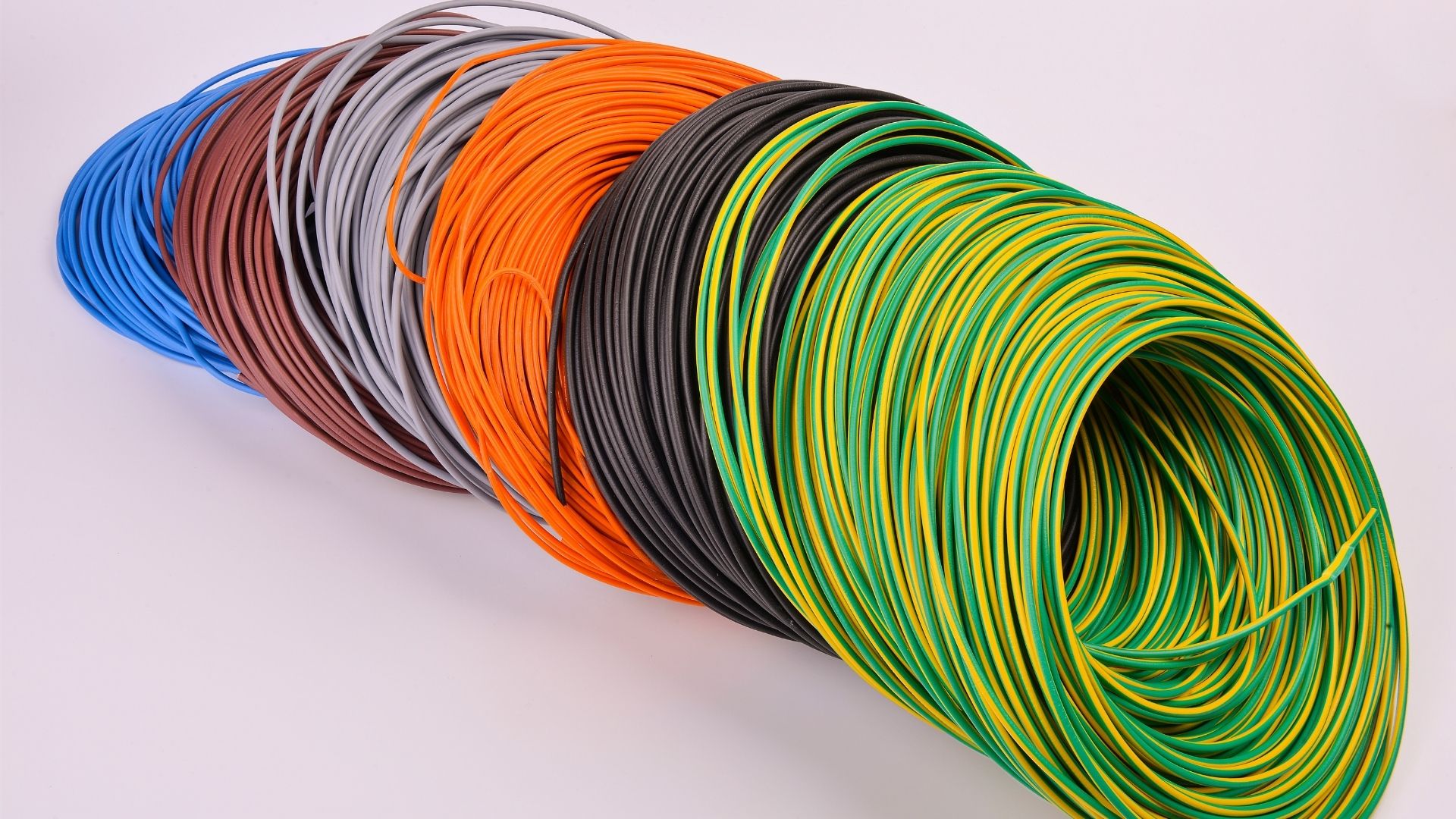If you don’t know what Romex cables are, you won’t understand why this question matters. After all, a cable consists of conductors that transmit current.
Can You Use Indoor Romex Outside in Conduit?
You can install a Romex cable outside if you run it through a conduit. The conduit protects the line, extending its life.
But you can’t use indoor Romex outside without conduit because indoor wires cannot withstand the temperature, chemicals, moisture, and other destructive elements associated with outdoor settings.
You should have the option of running any cable in any indoor or outdoor location that suits you. What makes Romex cables so unique that they require a conduit before you can install them outside? The answers to all those questions become apparent once you understand what Romex wires are and how they compare to other types of conductors.
The next time you go shopping, your retailer will ask you to choose between THHN, Romex, and UFB wires:
- THHN wire has a bare copper conductor and a cheap PVC jacket
- Romex wire has multiple THHN wires and a bare copper wire. It also features a simple PVC jacket that offers basic protection.
- UFB wire is a suitable alternative for outdoor use. It is more expensive because it brings additional protections to the table.
You cannot use THHN or Romex wire outside because it is not strong enough to survive the destructive elements associated with exterior settings. The Spruce has elaborated by pointing out that Romex is an NM (nonmetallic) electrical cable.
It is common practice to run copper wires in parallel within a bundle. You can run the individual wires separately, but the process is messy and inconvenient. It makes more sense to seal the conductors within a cable.
But you have to protect the bundle as a whole as well as the individual wires. This is where Romex fails. Some cables have a metal sheath that can withstand extreme conditions.
Romex cables are called ‘Non-Metallic’ because their jacket is not metallic. The PVC jacket is tough enough to repel the conventional sources of stress the line will encounter indoors.
Additionally, the wires within the bundle have a paper that keeps the individual conductors separate. These attributes have their benefits. For instance, Romex is light.
If you have ever handled cables with a metallic sheath, you know how difficult they are to install. Romex is lighter and more flexible. You can coil and straighten the line with relative ease, pulling it through holes, reducing the length by cutting the cable with pliers where necessary, and stripping the sheath off to force the cable through a smaller conduit.
Romex is popular because of its versatility. You can use the brand in every significant indoor application, including lighting and outlet circuits. But even though I recommend Romex for indoor use, I will be the first to discourage you from using non-metallic cables like Romex outside.
If you’re still tempted to run Romex outside, try to keep the following in mind:
1). Romex Can’t Provide Enough Protection
Romex’s sheathing is not strong enough to defend against external elements. Gas, oil, moisture, and other dangerous components will overcome the PVC jacket and the paper that keeps the individual conductors separate.
2). Outdoor Romex Doesn’t Exist
You may assume that outdoor Romex does a better job of withstanding exterior stresses than indoor Romex. But outdoor Romex doesn’t exist. You can find UF cables that look like Romex, but they are not Romex.
Romex is not a type of wire. It is a brand that professionals categorize as ‘Nonmetallic’ because it has a non-metallic sheath. You can buy outdoor cables that can survive without a conduit. However, don’t call those cables Romex.
3). Underground The Romex With The Help Of a Conduit
You can run an indoor Romex cable underground if you use a conduit. The conduit can withstand pests and pressure. Without a pipe, the Romex cable will deteriorate at a faster rate.
4). Select The Best Type Of Conduit
Contractors love flexible conduits because of their versatility. Metal conduits are stronger. You can trust them to protect the Romex from harsh conditions. But they become problematic when you need to bend the wire. Metal conduits can damage the cable.
Your selection will depend on the conditions you expect the cable to encounter outside.
5). Check The Law
What does your local code say? Conduits are not perfect. They are costly, time-consuming, and challenging to install. But if your local code expects you to run the Romex through a pipe, you must obey regardless of whether or not you want to use conduits.
Every professional contractor knows what the NEC has to say about conduits. But the local code takes priority. Consult a local contractor to find out what the local code says about Romex and conduits.
6). Use Metallic Wires Outside
You cannot use Romex cables outside because they have a nonmetallic sheath. However, you can use an outdoor UF cable indoors. They may present a challenge because they are heavier and less flexible. But the practice is not dangerous.
Although, you are better off using Romex inside and its UF counterparts outside. Use each wire for the purpose for which it was designed. Keep nonmetallic cables inside and metallic wires outside.
What If I Use It Outdoors? What Should I Need To Check Before Using It in Conduit?
The filling capacity is the most significant concern. You don’t want to pack too many wires into a conduit. It defeats the purpose because the wires will overheat, and overheating will damage the cables.

The table includes the conduit type. If you know the wire gauge, you can use tables like this one to figure out the appropriate conduit type, size, and the number of wires it can accommodate.
Laypeople typically leave this decision in the hands of a professional electrician. Yes, the internet has several tables that reveal the conduit fill capacity. But a contractor will look at the application and setting before identifying Romex cables with the correct gauge and temperature rating based on the conduit you want to use.
They will also determine whether it makes sense to use Romex cables or if you’re better off investing in UF wires. Some local authorities prohibit homeowners from performing such installations.
They expect consumers to leave this work in the hands of a licensed electrician. Therefore, your local authorities may take this decision away from you.
It is not that difficult to understand why people use Romex outdoors. UF cables are costly. But you should compare conduit and UF cable prices before assuming that a Romex cable in a pipe is cheaper than a UF cable.
UF cables are easier to handle because you don’t have to run these products through a conduit to use them outside.
What Does NEC Say About It?
NEC wants contractors to protect nonmetallic cables from damage by using conduits. The NEC doesn’t mention Romex directly because Romex is not a type of wire.
It is a brand. Nonetheless, you can apply the NEC’s regulations to Romex because the NEC mentions nonmetallic wires, and Romex cables are nonmetallic.
Don’t assume that you can do whatever you want with Romex simply because the NEC doesn’t address the brand directly. The National Electric Code does not mention specific brands.
Their rulings are concerned with wire types, sizes, and standards. You should also check your local code. Some local authorities have regulations that differ from the NEC.
But the layperson is unlikely to identify the differences between their local code and the NEC, especially if they have zero electrical experience. This is why local contractors are so important.
They have a better understanding of the local code than you do because they apply it every day.
Can I Strip Romex and Run In Conduit?
Romex works indoors. The brand does not offer outdoor cables. But are you expected to strip the Romex cables before running them through the conduit? This practice is not mandatory. You don’t have to strip the wires beforehand. People strip the wires because conduits can retain heat. That heat can destroy the wires.
Stripping the sheathing fights heat buildup. Many contractors will also argue that a Romex’s jacket doesn’t serve any purpose once you run the cable through a conduit. The jacket becomes redundant because the tube provides plenty of protection.
But again, you don’t have to strip the wires. You are free to make whatever decision suits your situation. Some people strip the Romex because it allows them to fit more wires in the conduit.
Related post:

